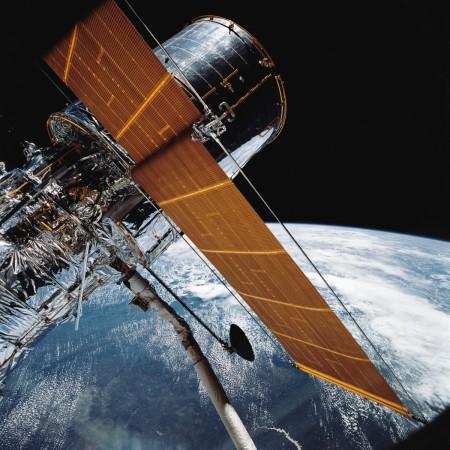
NASA's Hubble Space Telescope has captured a few images that show the ever-changing universe and its evolution. Astronomers turned Hubble's ultraviolet vision towards the vast cosmos and as a result were able to capture what is probably one of the largest panoramic views ever photographed. The images show what the space agency calls the "fire and fury of star birth".
The field of view for these images covers about 15,000 galaxies, of which nearly 12,000 have new-born stars. Hubble's ultraviolet viewer is being put to use by astronomers to track the long evolution of stars, covering entire lifespans starting at a time in the early years of the universe over 11 billion year timeline. This was a time when the universe was at its busiest star-creating period- 3 billion years after the Big Bang.

NASA explains that ultraviolet was seen as the missing piece to the cosmic puzzle that is the creation and evolution of the entire universe. Now, combining infrared and visible-light information from Hubble and other telescopes, both on Earth and placed in space, astronomers have been successful in assembling what is possibly the most "comprehensive portraits yet of the universe's evolutionary history".
This picture covers a portion of the "GOODS-North field" in the northern constellation Ursa Major.
The image closes the gap between distant galaxies, which NASA says can only be seen in infrared. Closer galaxies can be seen across a broad spectrum of light. Light coming from far away star-forming nebulas start off in the ultraviolet spectrum. The gradual expansion of the universe over time has stretched this light into infrared wavelengths, explains the space agency.

When images of star formation are compared with distant and close parts of the universe, astronomers are able to gain a better understanding about how galaxies expanded from small clumps of hot, young stars aeons ago.
Hubble has a much better view of UV light in the cosmos as it is in space because Earth's atmosphere filters out UV from entering.
Images were captured as part of the Hubble Deep UV (HDUV) Legacy Survey programme, says the NASA report. It serves as an extension, building on previous Hubble multi-wavelength data collected by the CANDELS-Deep (Cosmic Assembly Near-infrared Deep Extragalactic Legacy Survey) fields within the central part of the GOODS (The Great Observatories Origins Deep Survey) fields.
This image covers 14 times the area of Hubble Ultra Violet Ultra Deep Field released in 2014.













